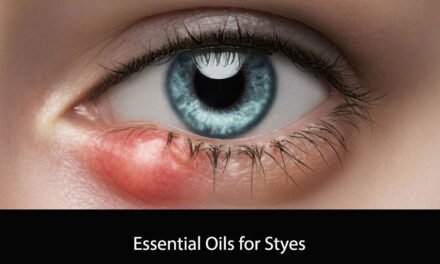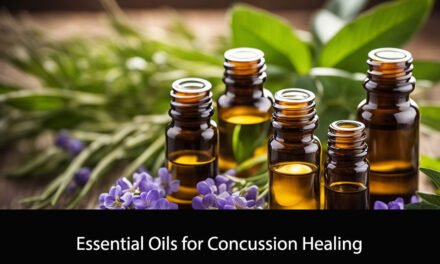Essential oils have been used for centuries for their therapeutic benefits. These oils are derived from plants and contain natural compounds that can help alleviate various ailments. One common issue that many breastfeeding mothers face is clogged milk ducts. This can cause discomfort and even lead to mastitis if left untreated. In this article, we will explore the use of essential oils for clogged milk ducts and how they can provide relief.
Clogged milk ducts occur when milk is not properly drained from the breast. This can happen due to a variety of reasons, including poor latch, infrequent feeding, or even stress. The result is a painful lump in the breast that can make breastfeeding difficult. Essential oils can be used to help reduce inflammation, promote milk flow, and alleviate pain associated with clogged milk ducts. We will discuss some of the most effective essential oils for this issue and how to use them safely.
Understanding Clogged Milk Ducts

As new mothers, we may experience a clogged milk duct at some point during our breastfeeding journey. A clogged milk duct occurs when milk flow is obstructed in the breast, leading to a build-up of milk behind the blockage. This can result in pain, swelling, and even infection if left untreated.
There are several reasons why a clogged milk duct may occur, such as infrequent or incomplete emptying of the breast, pressure on the breast from tight clothing or a poorly fitting bra, or even stress. It is important to identify the cause of the clogged duct to prevent it from happening again in the future.
Symptoms of a clogged milk duct include a tender, painful lump in the breast, redness and warmth in the affected area, and a decrease in milk supply from the affected breast. It is important to address a clogged milk duct as soon as possible to prevent it from progressing into a more serious condition.
In addition to traditional treatments such as warm compresses, massage, and frequent breastfeeding or pumping, some mothers have found relief from using essential oils. However, it is important to note that essential oils should be used under the guidance of a healthcare professional and should not replace traditional treatments.
We recommend speaking with a lactation consultant or healthcare provider before using essential oils for a clogged milk duct. They can provide guidance on safe and effective use, as well as monitor your progress to ensure that the clogged duct is resolving properly.
Essential Oils Overview

We understand that clogged milk ducts can be a painful and frustrating experience for nursing mothers. Essential oils have gained popularity in recent years as a natural remedy for various ailments, including clogged milk ducts.
Essential oils are concentrated plant extracts that are used for their therapeutic properties. They can be extracted from various parts of the plant, including the leaves, flowers, stems, and roots. Each essential oil has a unique chemical composition that gives it its distinct aroma and therapeutic benefits.
When it comes to clogged milk ducts, certain essential oils have been found to be helpful in relieving the symptoms. Peppermint oil, for example, has a cooling effect that can help reduce inflammation and pain. Eucalyptus oil has a similar effect and can also help clear the sinuses, making breathing easier.
It’s important to note that essential oils should be used with caution, as they are highly concentrated and can be toxic if ingested or applied directly to the skin. It’s recommended to dilute essential oils with a carrier oil, such as coconut or jojoba oil, before applying them topically.
In addition, it’s always a good idea to consult with a healthcare professional before using essential oils, especially if you’re pregnant or breastfeeding. Some essential oils may not be safe for use during these times.
Overall, essential oils can be a helpful addition to your clogged milk duct treatment plan. However, it’s important to use them safely and in conjunction with other treatments recommended by your healthcare provider.
Safety Precautions for Using Essential Oils
When using essential oils for clogged milk ducts, it is important to take certain safety precautions to ensure safe and effective use. Here are some of the key safety considerations to keep in mind:
- Dilution: Essential oils are highly concentrated and should always be diluted before use. We recommend using a carrier oil such as coconut oil or sweet almond oil to dilute the essential oil before applying it to the skin.
- Patch test: Before using a new essential oil, it is important to do a patch test to check for allergic reactions or skin irritation. Apply a small amount of diluted oil to the inside of your wrist and wait 24 hours to see if there is any reaction.
- Quality: Choose high-quality, pure essential oils from a reputable source. Look for oils that are labeled as “therapeutic grade” or “100% pure.”
- Storage: Essential oils should be stored in a cool, dry place away from direct sunlight. Keep them out of reach of children and pets.
- Consultation: If you are pregnant, nursing, or have any medical conditions, consult with your healthcare provider before using essential oils.
By following these safety precautions, you can use essential oils for clogged milk ducts safely and effectively.
Recommended Essential Oils for Clogged Milk Ducts
When it comes to treating clogged milk ducts, essential oils can be a natural and effective option to help alleviate the symptoms. Here are some of the most recommended essential oils for clogged milk ducts:
Lavender Oil
Lavender oil is known for its calming and relaxing properties. It can also help reduce inflammation and pain, which can be beneficial for clogged milk ducts. To use lavender oil, add a few drops to a carrier oil like coconut or almond oil and massage the affected area in a circular motion.
Tea Tree Oil
Tea tree oil has antimicrobial and anti-inflammatory properties, making it a great option for treating clogged milk ducts. It can help reduce swelling and pain, and also prevent infection. To use tea tree oil, dilute a few drops in a carrier oil and apply it to the affected area.
Chamomile Oil
Chamomile oil is known for its soothing and calming properties. It can also help reduce inflammation and pain, making it beneficial for clogged milk ducts. To use chamomile oil, add a few drops to a carrier oil and apply it to the affected area.
It’s important to note that essential oils should always be diluted with a carrier oil before use, as they can be too strong and cause skin irritation. It’s also important to consult with a healthcare professional before using essential oils, especially if you are pregnant or breastfeeding.
Application Methods for Essential Oils

When using essential oils for clogged milk duct, it is important to know the proper application methods to ensure maximum effectiveness and safety. Here are three common ways to apply essential oils:
Topical Application
Topical application is the most common method of using essential oils. Dilute the essential oil with a carrier oil, such as coconut or almond oil, and apply it directly to the skin. Massage the oil into the affected area, focusing on the clogged milk duct. This method is effective because the oil can penetrate the skin and reach the affected area quickly.
Warm Compresses
Warm compresses can help to loosen the clogged milk duct and make it easier for the essential oils to penetrate the skin. Soak a clean cloth in warm water and wring out the excess. Add a few drops of essential oil to the cloth and place it over the affected area. Leave the compress on for 10-15 minutes, then remove and massage the area. Repeat this process several times a day until the clogged duct clears.
Aromatherapy
Aromatherapy involves inhaling essential oils through the nose or mouth. Add a few drops of essential oil to a diffuser or vaporizer and let it run for 15-20 minutes. Alternatively, add a few drops of essential oil to a bowl of hot water and inhale the steam. This method is beneficial for clearing the sinuses and reducing inflammation, which can help to relieve clogged milk ducts.
Remember to always dilute essential oils before applying them to the skin, and to consult with a healthcare professional before using essential oils for any medical condition.
Complementary Natural Remedies
When dealing with clogged milk ducts, essential oils can be a powerful tool to help alleviate symptoms. However, there are also other natural remedies that can be used in conjunction with essential oils to enhance their effectiveness.
Massage Techniques
Massaging the affected breast can help to loosen the blockage and improve milk flow. Use gentle circular motions with your fingertips, starting from the outside of the breast and working your way towards the nipple. You can also try using a warm compress or taking a warm shower beforehand to help relax the breast tissue.
Hydration and Diet
Staying hydrated is crucial when dealing with clogged milk ducts. Make sure to drink plenty of water and other fluids throughout the day. Additionally, eating a well-balanced diet that includes plenty of fruits, vegetables, and whole grains can help to promote overall breast health.
Breastfeeding Practices
Proper breastfeeding techniques can also play a role in preventing clogged milk ducts. Make sure to empty each breast completely during each feeding, and try to alternate which breast you start with at each feeding. Additionally, avoid wearing tight-fitting bras or clothing that can put pressure on the breasts.
Incorporating these complementary natural remedies alongside essential oils can help to provide relief from clogged milk ducts and promote overall breast health.
When to Seek Medical Advice
If you have tried using essential oils for clogged milk ducts and are not seeing any improvement, it may be time to seek medical advice. It is important to note that clogged milk ducts can lead to more serious conditions such as mastitis, which is an infection of the breast tissue.
If you experience any of the following symptoms, it is important to seek medical attention:
- Fever
- Redness or warmth in the breast
- Pain or tenderness in the breast
- Flu-like symptoms such as chills or body aches
It is also important to seek medical attention if you have a history of breast cancer or if you are experiencing recurrent clogged milk ducts.
Your healthcare provider may recommend antibiotics or other treatments to help clear the clogged duct and prevent further complications. It is important to follow their recommendations and continue to monitor your symptoms.
Frequently Asked Questions

What alternative remedies can be used if Epsom salt is unavailable for a clogged milk duct?
If Epsom salt is unavailable, you can try using warm compresses instead. Applying a warm compress to the affected breast can help to relieve the clogged duct. You can also try massaging the breast gently while applying heat.
How can a stubborn clogged milk duct be effectively treated?
If a clogged milk duct is stubborn and not responding to home remedies, it is important to seek medical advice. A healthcare provider may recommend using a breast pump or manually expressing milk to help clear the clogged duct. They may also prescribe medication to help reduce inflammation and pain.
Can applying a potato compress help with a clogged duct, and how is it done?
There is no scientific evidence to support the use of potato compresses for clogged milk ducts. It is best to stick to tried and tested remedies such as warm compresses and gentle massage.
Is Phytolacca decandra an effective treatment for clogged milk ducts, and how should it be used?
Phytolacca decandra, also known as poke root, is a plant that has been used traditionally to treat breast engorgement and clogged milk ducts. However, there is no scientific evidence to support its effectiveness or safety. It is important to speak to a healthcare provider before using any herbal remedies.
What role do cold compresses play in the management of clogged milk ducts?
Cold compresses can help to reduce inflammation and pain associated with clogged milk ducts. However, they should only be used after warm compresses and massage have been tried. Applying a cold compress too early can actually make the clogged duct worse.
Are there any specific probiotics recommended for the prevention or treatment of clogged milk ducts?
There is no specific probiotic that has been proven to prevent or treat clogged milk ducts. However, maintaining good breast hygiene and a healthy diet can help to prevent clogged ducts from occurring.





